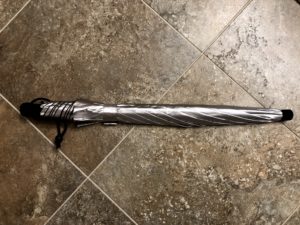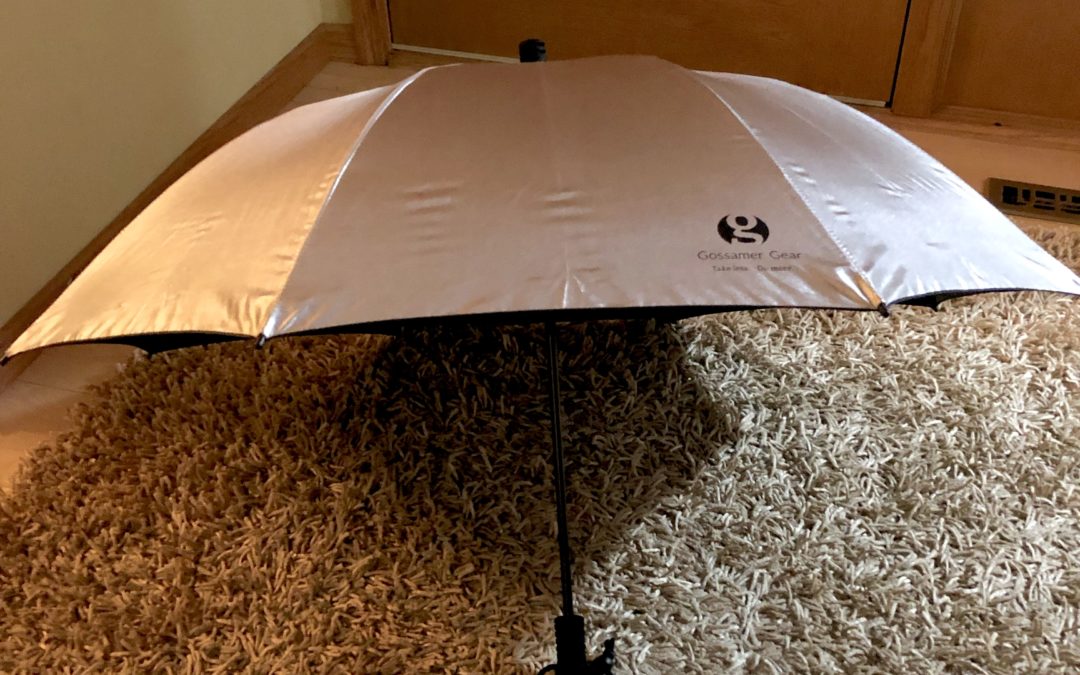
Hiking umbrellas aren’t something you hear being discussed a lot. I never even knew there was such a thing until several years ago, when I began long-distance hiking in earnest. So what is a hiking umbrella?
Disclosure: This entry contains affiliate links (among regular links) to products I own and like, or which I think you might like. This means that, at no extra cost to you, I will earn a commission if you click through and make a purchase.
One thing the umbrella was great at was keeping the rain off of me! So I used it mainly for that purpose for one year – until I lost it on the New England Trail. Rats.
It’s a lightweight, flexible umbrella with a high UV protection factor. So not something you pick up at your nearest drugstore or department store.
Tried One on the FT
I first tried one when hiking the Florida Trail (FT) in 2017. After all, Florida is hot! I’d watched some videos on how to best attach it to my backpack so I could still hike with my trekking poles. Unfortunately, I never quite mastered the trick.
Instead, I ended up hiking while holding the umbrella in one hand and one trekking pole in my other hand. I didn’t care for that. The umbrella also didn’t seem that useful. It was often windy on the trail, and I’d have to move the umbrella around so it didn’t blow away. And sometimes my head got really hot under there. Because while the umbrella kept the sun off my head, it also trapped all of that hot, humid air in there, too.
One thing the umbrella was great at was keeping the rain off of me! So I used it mainly for that purpose for one year – until I lost it on the New England Trail. Rats. Don’t make the same mistake I did, which was to attach it to the bottom of the outside of my pack. That made it easy for the umbrella to snag on vegetation and get pulled off my pack. Ironically, I didn’t notice when it fell off because it was so lightweight.
Giving It Another Try
Despite my initial underwhelming experience, I haven’t given up on hiking umbrellas. I’m gearing up to hike the Arizona Trail (AZT) this March. I polled members of the Arizona Trail Class of 2019 Facebook page to see what seasoned AZT hikers thought about using a lightweight bumbershoot. Their overwhelming response was YES!
It can be really hot in Arizona, of course, and shielding your head (and arms) from the sun’s rays is useful. And while it doesn’t rain much there, it sometimes pours. Rather than carry bulky, heavy rain gear, your umbrella can do the trick.
But more importantly, Arizonans noted there are a lot of stretches on the AZT that run through the desert, where there is NO SHADE for miles. An umbrella is certainly useful then. It’s especially pleasant to sit under when you take a break or have lunch.
My New Baby
I was sold, mainly by the idea of eating lunch in the shade and not having to pack rain gear. So I purchased a new hiking umbrella by Gossamer Gear, a favorite in the hiking community. The company says it can reduce the feel of the sun by up to 15 degrees. It’s only eight ounces. The canopy is made from polyester that’s tear-proof and coated with Teflon for great water repellence. Its UV protection factor is 50+. The frame is a highly flexible fiberglass. And the handle is a nice, cushy, hard-density foam.
Gossamer Gear, a favorite in the hiking community. The company says it can reduce the feel of the sun by up to 15 degrees. It’s only eight ounces. The canopy is made from polyester that’s tear-proof and coated with Teflon for great water repellence. Its UV protection factor is 50+. The frame is a highly flexible fiberglass. And the handle is a nice, cushy, hard-density foam.
I also found better advice on how to attach it to my backpack. (And yes, my Gossamer Gear umbrella has a notched handle, which is supposed to make attaching it easier.)
I’m feeling positive about this purchase. I’ll let you know what I think after my hike.
Here are two popular hiking umbrellas: The one I have is from Gossamer Gear, while many other hikers love this one by Six Moon.
May 2022 update: I’ve used my hiking umbrella numerous times over the years, mostly for rain. But it most recently came in handy during some scorching days on the Potomac Heritage Trail. LOVE IT.




